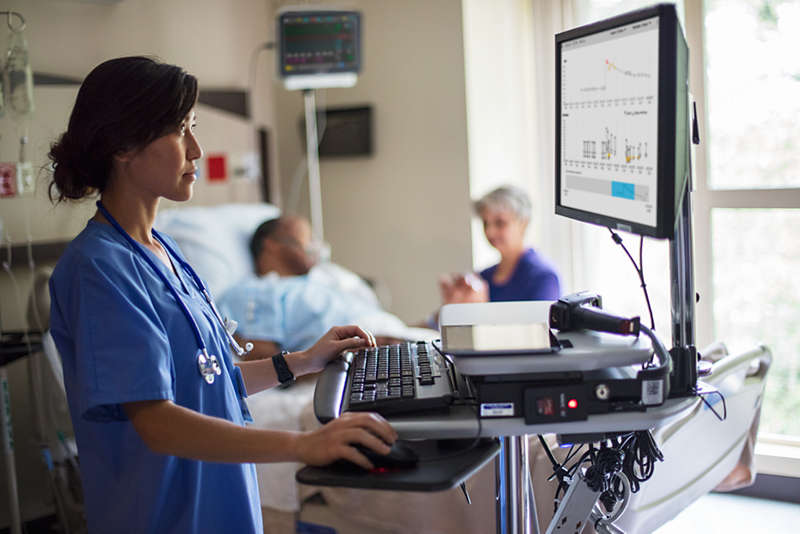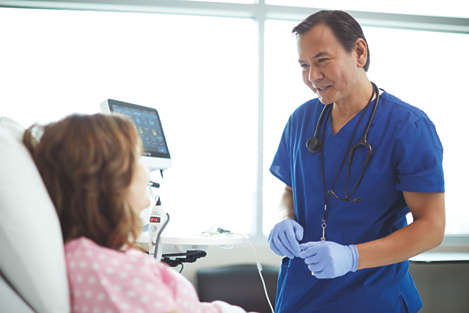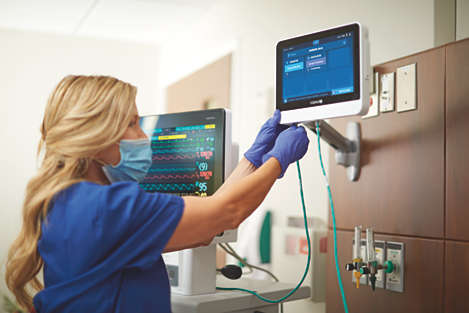How IHE HL7 Integration Profiles take the drudgery out of connecting medical devices
Article ∙ By Philips Healthcare ∙ Tem 07, 2023 ∙ 2 min read
Rosetta Terminology Mapping (RTM) helps normalize physiologic data captured from multiple different devices, which is crucial for research and patient care. Another similar and important data standardization tool for hospitals is IHE HL7 Integration Profiles, described in this post. IHE HL7 Integration Profiles go hand-in-hand with RTM to help hospitals integrate medical devices and create interoperable environments to help clinicians make safe and effective care decisions.
Article at a glance
Data standardization tools
In our last blog post, we described Rosetta Terminology Mapping (RTM) and how hospitals use it to standardize physiologic data outputs from their medical devices. With RTM, information from disparate devices can be accurately and efficiently shared with downstream systems, such as the electronic health record (EHR).
RTM helps normalize physiologic data captured from multiple different devices, which is crucial for research and patient care. Another similar and important data standardization tool for hospitals is IHE HL7 Integration Profles, described in this post. IHE HL7 Integration Profiles go hand-in-hand with RTM to help hospitals integrate medical devices and create interoperable environments to help clinicians make safe and effective care decisions.

As referenced previously, IHE stands for Integrating the Healthcare Enterprise, an international consortium of healthcare and industry experts focused on improving healthcare information sharing. More than a decade ago, IHE recognized the challenge hospitals faced sharing data between medical devices and other systems. IHE began creating integration profiles based on industry standards, such as Health Level 7 (HL7), to ensure that these “transactions” of information between devices were accurate.
Over the years, vendors preloaded these integration profiles into device software, making the linkage with other systems across the hospital much simpler and less time-consuming.
The Device Conundrum
Most hospitals recognize the importance of connecting medical devices to downstream information systems. Benefits of such medical device integration (MDI) efforts include time savings for clinicians, thanks to less manual data entry into other systems.
Automated capture of vital signs and other physiologic data also might reduce the risk of data-entry errors, which can compromise patient safety. Another safety concern that integrated, automated and continuous device data capture can help solve is alerting clinicians to signs of patient deterioration sooner. Even in the most closely monitored areas of the hospital, intensive care units (ICUs), patients can go as long as 70 minutes without their vitals being checked.1
MDI efforts, however, require a significant time commitment for information technology and other professionals who face multiple competing priorities.2 Since clinicians have been monitoring patients for decades without connected medical devices, some hospitals choose to delay integration projects, despite the inherent risks and inefficiencies.
What IHE HL7 Integration Profiles offer
IHE HL7 Integration Profiles can help hospitals avoid both the drudgery of MDI and the risk of leaving devices disconnected. Based on the HL7 data standard, these profiles remove the time-consuming guesswork by offering a much more prescriptive way of formatting the transactions of data between devices. In other words, HL7 tells us what we can do, IHE Integration Profiles tells us how to do it. While applying these profiles is not as simple as plugging in a new device into a network and then sharing data, it moves the industry closer to that goal.
Some vendors, such as Retia Medical, are updating devices to include the IHE HL7 Integration Profiles already embedded in their software so the equipment can more easily communicate with the downstream system. Recently, Retia Medical used Capsule Technologies’ Device Drive Interface development strategy to update its Argos Cardiac Monitor to include the IHE HL7 Integration Profile. As a result, the monitor connects with Capsule’s Medical Device Information Platform, which in turn, links it with the EHR or any other system. Hopefully, more device makers will follow Retia’s example and utilize both IHE HL7 Integration Profiles and RTM to simplify their medical device integration efforts so that hospitals can deliver safer, data-driven care without the time-consuming IT drudgery.
Footnotes
[1] Maslove DM, Dubin JA, Shrivats A, Lee J. “Errors, Omissions, and Outliers in Hourly Vital Signs Measurements in Intensive Care.” Crit Care Med. (2016). https://journals.lww.com/ccmjournal/Abstract/2016/11000/Errors,_Omissions,_and_Outliers_in_Hourly_Vital.27.aspx. Accessed February 4, 2021.
[2] Zaleski, John R., Ph.D, “Medical Device Interoperability and Data Integration to Clinical Information Systems: Medical Device Data Alignment.” Biomed Instrum Technol (2012). https://meridian.allenpress.com/bit/article/46/s2/65/142359/Medical-Device-Interoperability-and-Data. Accessed January 26, 2021


